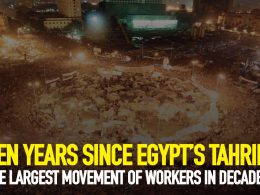The full economic costs of the devastation caused by the floods- the worst in many years- in Khyber Pakhtoonkhwa, South Punjab, parts of Baluchistan and Sindh, will not be known for some time. But they are likely to be substantial, both for the people affected by the deluge and for Pakistan’s cash-starved government.
Former federal Finance Minister, Dr Salman Shah, estimates that costs of rehabilitation of the flood-affected population and reconstruction of damaged infrastructure in different parts of the country could be in the range of $ 4 – 5 billion. Another economist put the figure between $ 3.5 and 4 billion. These losses are enormous when seen in the context of cumulative damages of about $ 6.5 billion in 14 floods since 1956.
According to another former Finance Minister and ex senior Vice President of the World Bank, Shahid Javid Burki, “we should get ready for another poor year for the economy, in the terms of the rate of the growth in the national product, pace of job creation and inter-personal and inter-regional income distribution. The government’s prediction that GDP in 2010-11 would increase by 4.1% now seems extremely optimistic. Given some of the shocks the economy has received in last few days, it appears that the national product will not increase by more than 2.5 to 2.8% this year. This will be about the same as the revised rate of growth in 2009-10. If that came about, Pakistan’s current economic expansion will be less than one half that of Bangladesh and one third that of India. Pakistan today is South Asia’s “sickest” economy and will remain that way unless the policy makers move decisively”.
The information minister of Khyber Pakhtoonkhwa Mian, Iftikhar Hussain, told reporters that “the infrastructure of this province was already destroyed by terrorism. Whatever was left was finished off by these floods”. This is also the case with South Punjab. It will take years for economy to come out this pathetic state. According to the UN, “the emergency phase will require hundreds of millions of dollars and the recovery and reconstruction part will require billions of dollars”. The government is looking for foreign aid and external help to overcome the present crisis, but the experience of Friends of Pakistan shows that an inflow of money from richer nations will not come so easily. If the government continues to depend mainly on foreign aid and assistance for the relief work, then the situation will become worst. Already affected people will be left to their own devices, to survive in the impossibly difficult situation. After this natural calamity, a man made crisis will unfold.
Agriculture hit the hardest
According to the spokesman of the World Food Programme, Amjad Jamal, “At least 1.4 million acres of crops were destroyed in Punjab. Many more crops were destroyed in North West and Sindh. The flooding has caused massive damage to crops and also to the reserves that people had in their houses. Khyber Pakhtoonkhwa was a ‘food insecure’ province even before the floods, and now in a lot of areas, people can’t afford even one meal a day”.
If we include the figures of Sindh and Khyber province, the total goes up to more than 2 million acres. This is massive damage. Sugar cane, rice and cotton crops have been badly damaged. Agriculture experts are saying that farm production in Pakistan, Asia’s third-largest grower of wheat and the fourth biggest producer of cotton, may decline by 20 to 30% because of this damage. The losses to agriculture and livestock would have a spill over effect on industry and commercial activities to a great extent. This is because agriculture continues to play a central role in the national economy. Accounting for over 21% of GDP, agriculture remains by far the largest employer, engaging 45% of the country’s labour force.
Damages, on the one hand, are likely to affect raw material supplies to the downstream industry that contributes to the export sector and, on the other hand, reduce the demand for industrial products like fertilizers, tractors, pesticides and other agriculture implements. And all this comes at a time when agricultural productivity has been falling over the years.
Since the flooding has been widespread, the damages to cotton crops may not be verifiable at this stage. Cotton, being a non-food cash crop, contributes significantly to foreign exchange earnings. It accounts for 8.6% of the value of agriculture and about 1.8% of GDP.
Likewise, sugar cane is a major crop, which is an essential item for industries like sugar mills, chipboard and paper. Its share in the value of agriculture and GDP is 3.6% and 0.8% respectively. Another cash crop, rice, is one of the main export items. It accounts for 6.4% of agriculture and 1.4% of GDP. High quality rice serves domestic demand and earns $2billion in exports every year.
Mostly small cities and towns surrounded by the villages have been affected. The big chunk of the economies of these cities and towns depend on the rural population. The rural population depends on agriculture for its economic survival. There are hardly any big industries in the affected areas. There are small industries which are also agricultural based and depend on agriculture for raw material. The economy of South Punjab largely depends on Cotton and wheat crops and mango orchards. The rural economy of Khyber Pakhtoonkhwa depends mostly on wheat and maize crops and also produces a large quantity of high quality fruits and vegetables. The vegetables have completely been wiped out and big damage done to the fruit orchards. The standing waters in the orchards are causing further damage to them.
The canal irrigation system has also been affected and water for irrigation might not be available to the farmers in many areas for the next crop.
Small farmers and peasants to suffer the most
The affected areas of South Punjab and Sindh are dominated by the feudal lords, who own more than 80% of the irrigated land. Small farmers and peasants make up the majority in the population. Some work as daily wage labourers in the nearby cities and towns. A majority of the workers either work as public sector workers or are employed in the agriculture-related small industries.
The small farmers and peasants will suffer the most from this disaster as feudal lords and big farmers will transfer the burden of disaster onto the shoulders of peasants and poor farmers. Feudal lords and big farmers have shifted their families to safe places in the cities but peasants and small farmers are suffering and facing the miseries of life because they have no means to move out of the affected areas. They have no place to go and are forced to live under the open skies. Poor people have been left with nothing and at the mercy of the state machinery for rescue and relief. They have lost their livelihoods and shelter. Now, the real problem will start for them when authorities start to the pay compensation and reconstruction money. They will be asked to provide ownership documents to get compensation for their destroyed homes and livelihoods which they can not provide because these lands belong to the feudal lords. These peasants have been working and living on those lands for generations but they do not own the lands. The destruction of crops means that they will be left without any food reserves or money for months to come. The government will offer cheap loans and other facilities to the feudal lords and big farmers, but nothing will be offered to poor peasants and small farmers. They will be left at the mercy of private money lenders and feudal lords to be fully exploited. These private money lenders and feudal lords will offer loans to these peasants and small farmers at very high interest rates. These peasants will be forced to work like slaves for feudal lords just for few thousand rupees. This disaster will further impoverish the hundreds of thousands of already extremely poor peasants and farmers.
Millions of peasants, agricultural workers and small farmers are suffering because capitalist class in Pakistan failed to eradicate feudalism and big land holdings in the country. No serious effort has been made to abolish landlordism and carry through progressive land reforms. Instead respective military and civilian governments have tried to strengthen the decaying feudal and tribal system. The eradication of feudalism and capitalism would bring millions of people out of the trap of this poverty, hunger and slavery-like situation.
Joint struggle of workers and peasants, rural and urban poor is needed to overthrow the decaying capitalist and feudal system and to replace it with the only just system: Socialism. Socialism is a system which bases itself on the needs of the people and not on profits. This system works for the millions and not for the millionaires and super rich.
Socialism is a system free of exploitation, repression and wars.
Our demands
* End feudalism and big landlordism; introduce land reforms and equal distribution of land.
* Compensation to all the affected without any discrimination on the basis of legal formalities, property rights etc.
* No surveys and verifications through the corrupt state officials, all this work must be done through local elected committees.
* Provide free seeds, electricity, fertilizers and other utilities to poor farmers and peasants.
* Relief and rehabilitation through the workers and peasants committees.
* Reduce the prices of vegetables, fruits and other food items.












